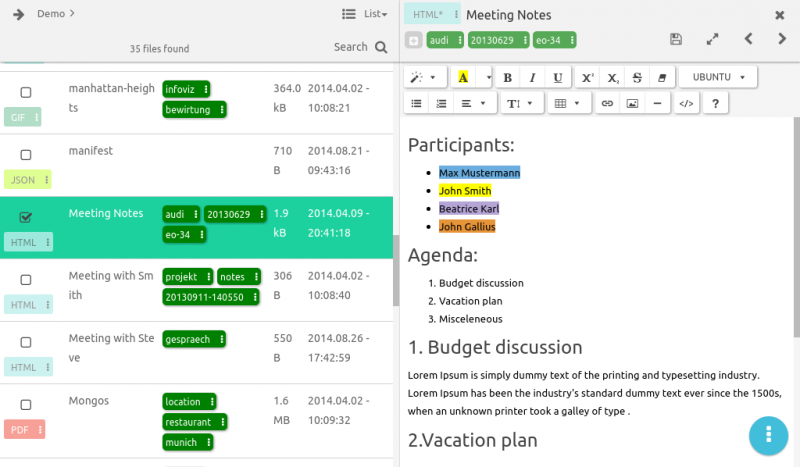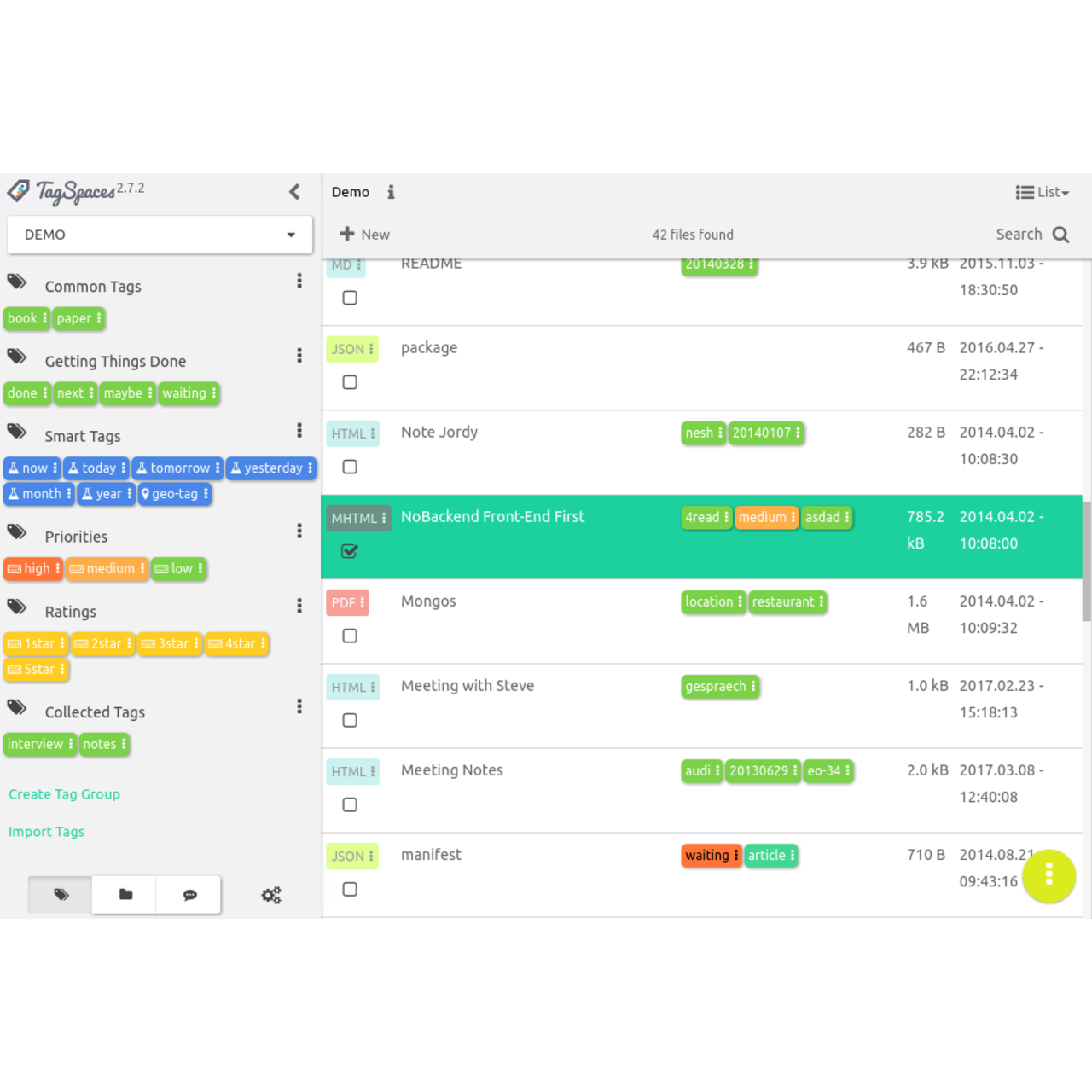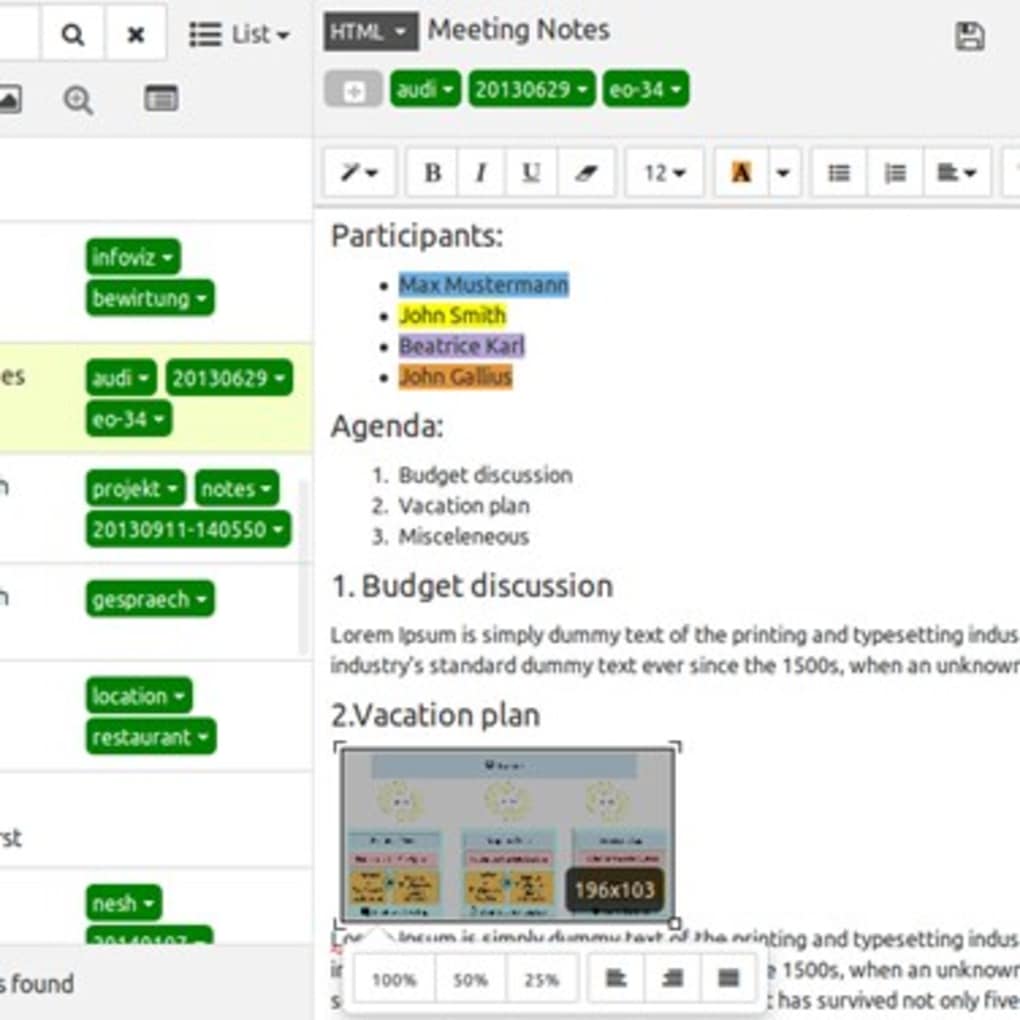
The modern equivalent, far more limited, complex and heavyweight is a DMS (see Nuxeo, Alfresco. It's just a personal HYPER-effective solution that might wrap&hide far less effective one used by collaborators still allowing interaction. This is IMVHO how we should manage files in 2022 BUT since Emacs and classic desktop model for commercial and ignorance reasons is essentially dead it's not something ready out-of-the-box and not something designed for collaboration.

#Review tagspaces code#
various org-mode extras to link different kind of stuff I can't org-attach properly, like mails (individual messages, threads, search queries on my mails etc), transactions (hledger via org-babel), mere elisp:(sexp) code to be executed live on click.ĭoing so allow me to IGNORE a limited and limited hierarchy, allow crafting dynamic hierarchies as results from SQL-alike (albeit limited and slow) queries, accessing most of the content in search&narrow style something proven to be effective in most kind of UI from search engines to "dashes" instead of "menus" etc and allow to blend a bit most kind of docs in a single "document"/page/live environment witch is VERY useful since we have a single mind, not really compartmentalized and we need different kind of "docs" together often. org-attach and links and dired to craft small "secondary-level file hierarchies" as a storage management layers, something that hide my real home taxonomy (essentially just notes on one root, other files managed by org-attach under another in a cache-like tree) I access via links Sometimes I need queries to work on things, like "check all active contracts" or "current issue" or "last three days notes" etc In 99% of the case I get "the good answer" (something already done or new content to add), sometimes I need rg/recoll because just heading/tags search do not work and in that case I adjust/add some roam_aliases to easy mach the content in the future. org-roam, org-ql (with a semi-curated catalog to make queries and yasnippets to ensure consistency) and ripgrep as access layer, witch practically means hitting a single key on my keyboard and start typing something. Given the above two consideration I decide for myself to org-attach almost anything. The fact we have many file formats and apps just to craft document is more a limit and an issue of modern systems that a reasonable thing. notes are another interesting things: ALL documents are kind of notes. Essentially a path in a file&folder classic taxonomy is a kind of limited and limited query to reach some content Sometimes a file should be in more than one place, there are links/symlinks but no "backlinks" so it's easy top break things and filenames are not much good for search.

TagSpaces can also browse files placed on S3 compatible object storage like from Wasabi or AWS S3.Personally, and I can't name a tool for you, I consider that: You can search for files using any combination of tags with the built-in search. Cross-references can be achieved by using tags in the folder hierarchy.
#Review tagspaces pro#
In the Pro version you can also turn every folder into a Kanban board, which allows you to represent process with the help of cards(files) and columns(folders). Geo-tagged files or photos can be placed on a digital map. In the Pro version, you can also add descriptions and geotags to files and folders. You can add labels also known as tags to any folder or file. TagSpaces can be connected to any folder on your hard disk and allow you to quickly browse its contents.

The built-in Markdown editor allows you to create notes that include tables, math formulas, todo lists and diagrams.

The TagSpaces Web Clipper allows you to collect web pages, bookmarks and geo-coordinates as well as screenshots from the Web.
#Review tagspaces download#
You can download it for Windows, macOS Linux and Android. It allows you to organize your files and folders using tags and colors. TagSpaces is a cross-platform, privacy-aware file manager and browser that has some note-taking capabilities.


 0 kommentar(er)
0 kommentar(er)
